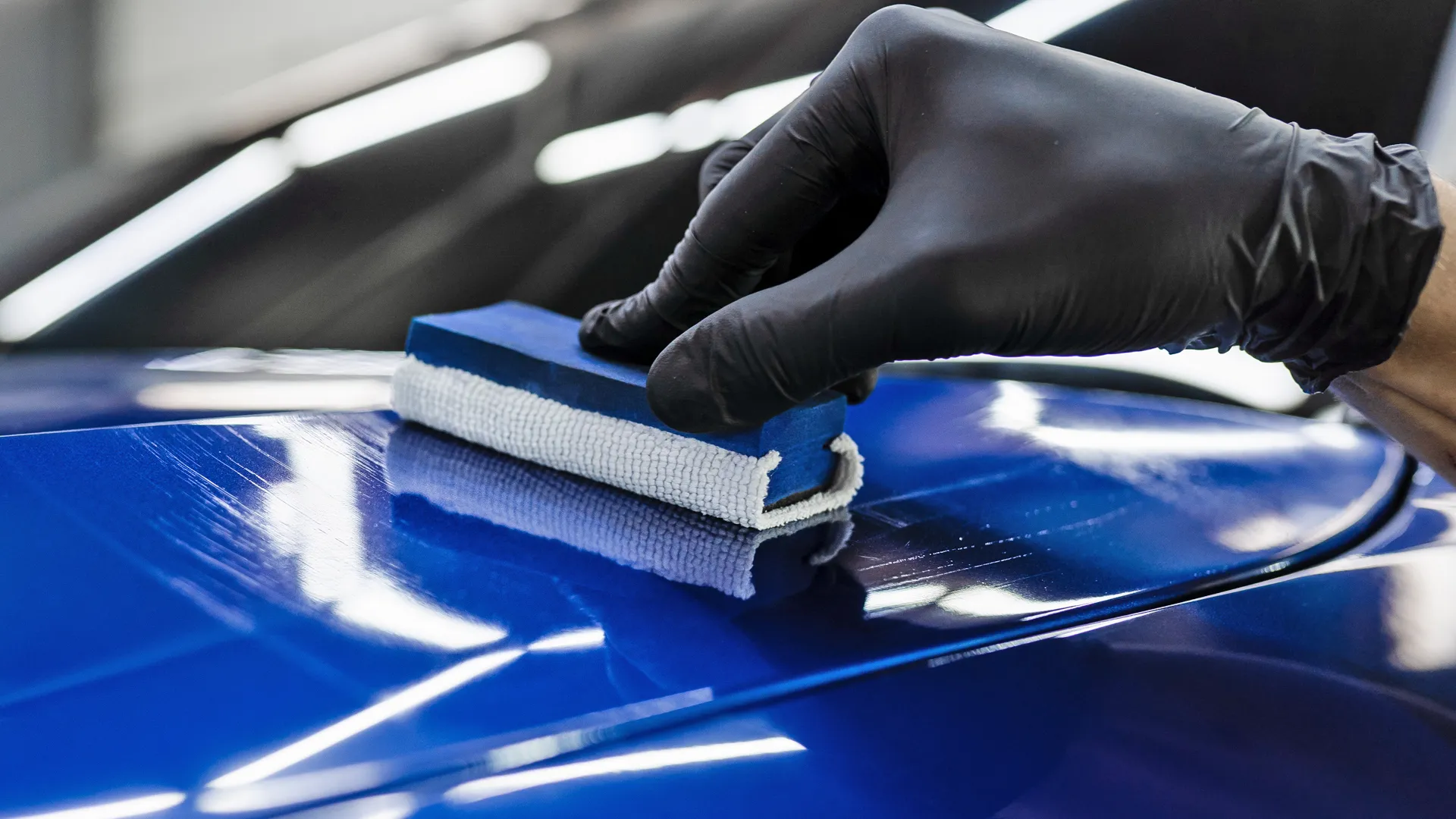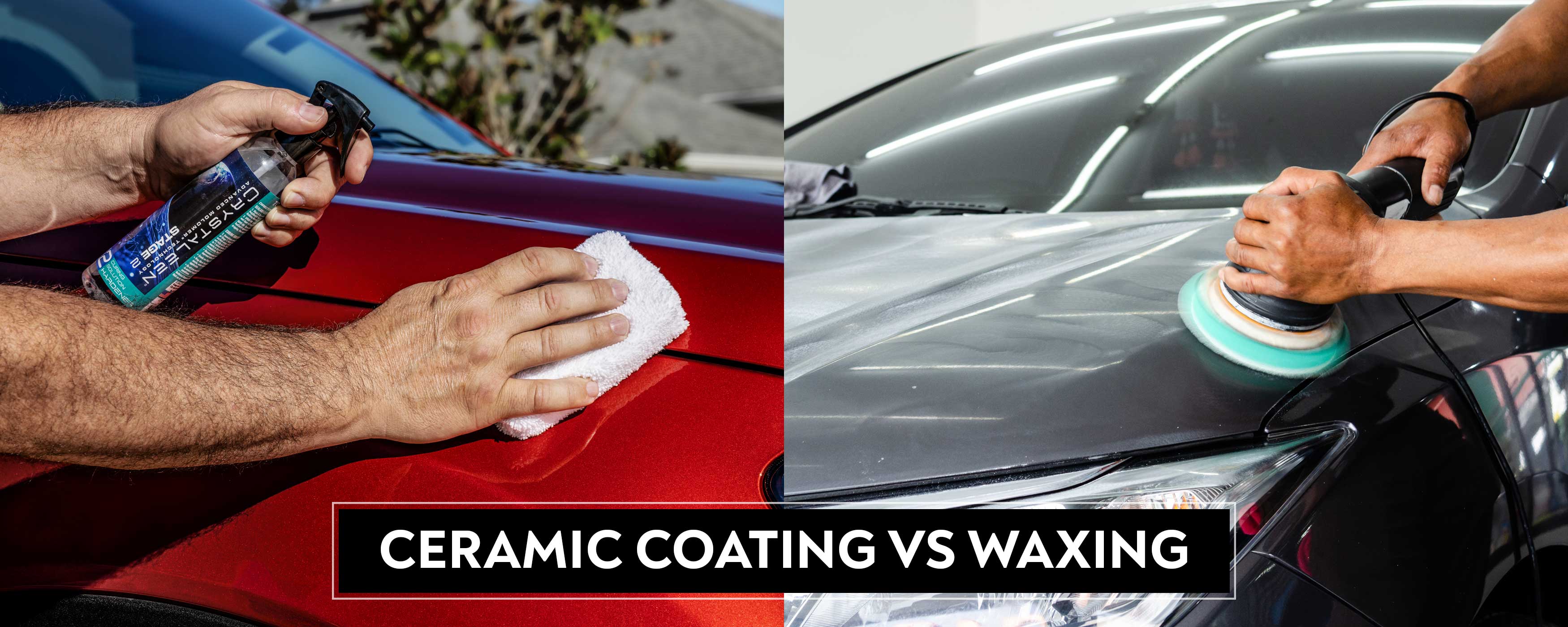Ceramic Coating vs. Traditional Wax: Which Supplies Much Better Long-Term Security?
The debate in between ceramic layers and typical wax for automobile protection has actually gathered significant focus among automotive lovers and professionals alike. Ceramic coatings flaunt exceptional longevity and resistance to ecological factors, yet the intricacy of their application raises inquiries regarding ease of access and practicality.
Introduction of Ceramic Finishing
Ceramic coating has actually gained substantial popularity amongst automotive lovers and detailers alike due to its sophisticated protective high qualities. This innovative innovation is designed to produce a durable, hydrophobic guard over a car's paint surface area, considerably boosting its resistance to environmental impurities such as dirt, UV rays, and chemical spots. Unlike traditional wax, which supplies a temporary layer of security, ceramic finishes bond at a molecular level with the paint, offering durable resilience-- often prolonging past 2 years with proper maintenance.
The application process entails meticulous preparation of the automobile's surface area, including cleaning and polishing to make sure optimum adhesion. Once applied, the layer cures to form a robust layer that not just includes depth and gloss to the paint however additionally streamlines maintenance. With its hydrophobic properties, ceramic covering permits water and dirt to slide off more quickly, minimizing the regularity of cleans and decreasing the threat of swirl marks.
Moreover, ceramic coverings are available in different formulas, allowing users to select products customized to their details demands and choices. In general, ceramic finishing represents a considerable innovation in paint defense modern technology, supplying remarkable efficiency contrasted to traditional options.
Overview of Traditional Wax
Traditionally considered as a staple in automotive care, wax functions as a popular selection for those looking for an uncomplicated approach to boost and protect their lorry's paint - ceramic coating. Automotive wax generally comprises all-natural components, such as carnauba, or synthetic substances, developed to create a safety layer externally of the paint. This layer not just improves the vehicle's gloss and beam but likewise gives an obstacle against ecological contaminants
The application of wax is generally straightforward, making it easily accessible for both professionals and do it yourself enthusiasts. It can be used by hand or device, permitting flexibility in the describing process. As soon as applied, wax calls for a curing duration, after which it hardens to develop a protective covering. Wax is additionally recognized for its ability to repel water, promoting a beading result that helps in the prevention of water spots and deterioration.
Nevertheless, while wax is efficient for enhancing the visual allure of a lorry, it is necessary to note that the protection it offers might require extra frequent reapplication compared to alternate products, such as ceramic coverings. Generally, standard wax remains a preferred choice for those focusing on convenience of usage and immediate visual renovation.
Toughness and Long Life Comparison
While both ceramic finishes and traditional wax deal safety advantages for automotive paint, their sturdiness and longevity vary considerably. Typical wax, typically made from all-natural carnauba or synthetic polymers, usually supplies a safety layer that lasts about three to 6 months. This fairly brief life expectancy demands normal reapplication to maintain optimal defense.
In contrast, ceramic finishings are engineered from sophisticated nanotechnology, developing a covalent bond with the paint surface area. This leads to a durable, hydrophobic layer that can withstand for two to five i loved this years, depending upon the product and environmental conditions. The premium durability of ceramic finishings is credited to their chemical framework, which uses boosted resistance to scrapes, UV rays, and oxidation.

Security Versus Environmental Variables
Protecting a lorry's paint from environmental elements is vital for keeping its appearance and value over time. Cars are constantly exposed to a selection of elements, consisting of UV rays, bird droppings, tree sap, acid rain, and road crud, every one of which can endanger the integrity of the paintwork.
Ceramic coatings supply a robust protection versus these ecological assailants. Unlike conventional wax, which can degrade swiftly under UV direct exposure, ceramic layers create a long lasting, hydrophobic layer that withstands the damaging impacts of sunshine and toxic wastes. This advanced modern technology develops a chemical bond with the car's surface area, offering superior defense that lasts for many years, even in severe problems.
Conventional wax, while less complicated to apply, usually needs regular reapplication and offers restricted resistance to contaminants and UV rays. Gradually, it can damage down, leaving the paint vulnerable to scrapes and oxidation. In comparison, ceramic finishings keep their protective qualities much longer, substantially decreasing the threat of paint damage and making sure that the automobile maintains its aesthetic allure. Consequently, ceramic coverings are increasingly recognized as the remarkable choice for lasting security versus environmental variables.
Application and Upkeep Differences
The methods of application and succeeding upkeep for ceramic finishes and traditional wax vary substantially, influencing the overall user experience and effectiveness of each item. Ceramic finishings call for an even more detailed application procedure, commonly including surface area prep work that consists of washing, sanitizing, and polishing the vehicle. Once the surface area prepares, the ceramic finish is used in a controlled atmosphere, typically needing specialist expertise to ensure proper treating and bonding to the paint.

While both products enhance automobile appearance, the longer-lasting defense used by ceramic finishings might validate their preliminary financial investment, despite the more demanding application procedure. Conversely, standard wax continues to be a popular choice try here for those seeking a simpler, albeit temporary, solution.

Final Thought
Finally, ceramic coatings demonstrate significant advantages over traditional wax in terms of resilience and environmental management. With a lifespan expanding 2 to 5 years and remarkable resistance to UV rays, dust, and chemical spots, ceramic finishings use a much more effective solution for long-term lorry upkeep. Although the application procedure might need expert experience, the resulting expense financial savings and decreased regularity of reapplication underscore the value of ceramic coatings for those looking for optimum automobile security.
The discussion in between ceramic coverings and traditional wax for automobile protection has actually gathered significant focus among auto fanatics and experts alike. Unlike traditional wax, which supplies a short-term layer of defense, ceramic finishings bond at a molecular degree with the paint, using long-lasting longevity-- typically expanding beyond 2 years with proper upkeep.
While both ceramic coatings and standard wax offer protective advantages for automotive paint, their toughness and longevity differ significantly. For automobile fanatics seeking long-lasting defense, ceramic coverings offer an engaging advantage over standard wax items.
In conclusion, ceramic finishings show significant advantages over standard wax in terms of longevity and environmental security.
Comments on “Is Ceramic Coating Worth the Investment for Your Car’s Exterior?”